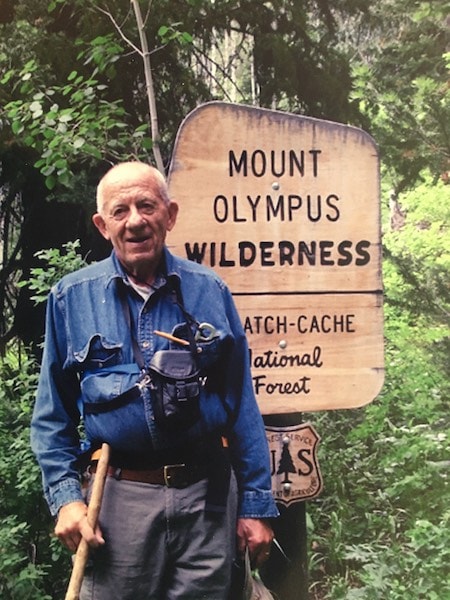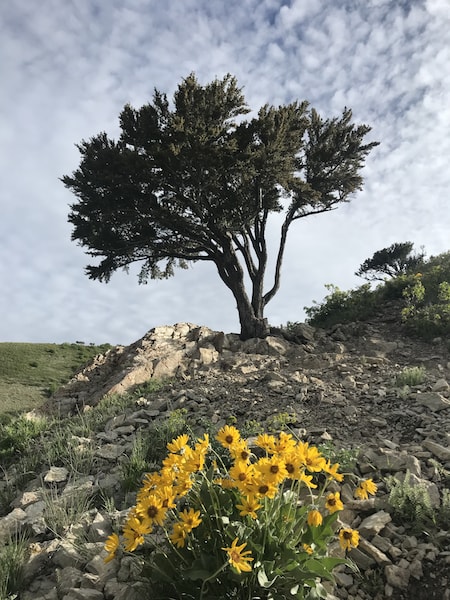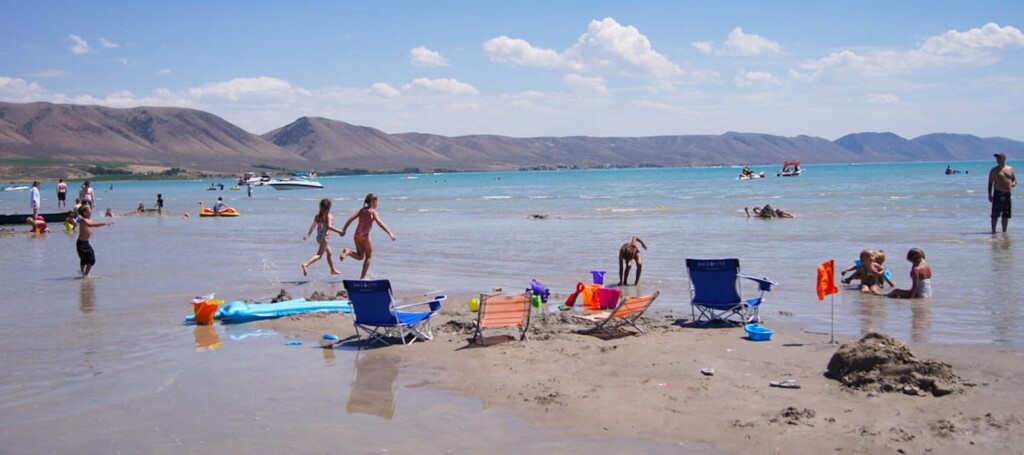
Although I had never met him in person, Bob Dustman became a friend of mine. I valued him for his fortitude, determination and love of the outdoors – qualities one can discern from a small plaque at the top of Mt. Wire which reads Bob Dustman (1925 to 2018) – Over 1,000 Times On Top. His wife would say it was over 1,500 times.
Lately, I’ve taken to buying old guidebooks, thinking I can learn a few things about what the Wasatch was like before the quest for Fastest Known Times. My 1977 Wasatch Trails guidebook describes Mt. Wire, “For the depressed city dweller, who needs a quick break from the pressure of daily life, who would like a moment to feel on top of things, but who doesn’t have much time to do it, this short, fairly steep hike is just the ticket.” It is nice to know some things haven’t changed.
Despite its proximity to the city, the mountain is a beast. Winds often fiercely rage on its ridgelines and animal encounters are frequent. Depending on which route you choose to the top, you’ll climb over 2,000 feet in less than two miles. Say Bob made that climb 1,500 times, that’s equal to climbing Mt. Everest more than 111 times from sea level.

Named after Lester Wire, a Salt Lake City policeman that invented the first red-green electric traffic light, others know the peak as Big Beacon or just plain Beacon after the rickety old airmail tower atop its summit that once guided pilots cross country at night. Bob’s plaque leans against it. The summit is one of the most prominent peaks in the foothills east of downtown and was once easily recognized by the two huge billboard-looking microwave reflectors that graced its heights. Bob was saddened when they were flown off by helicopter in 2013. They were there for years and even though they were an eyesore, he felt the mountain looked naked without them.
Robert Earl Dustman was born in Caldwell, Idaho and served with the navy in the South Pacific during World War II. Upon returning home, he taught school in Idaho and spent his summers atop a fire lookout tower in what is now the Frank Church-River of No Return Wilderness. He wound up in Salt Lake City in the late 1950s where he received his PhD in psychology and took a job working for the VA.
His daily life revolved around Mt. Wire. He would walk up there from his house and often he would make a loop of it on the way to or home from work. Sometimes he would even head up there twice in one day, no matter the weather, winter or summer. He knew every rock and gnarled tree. He made little flashcards so he could remember the names of all the wildflowers. It wasn’t just Wire; he hiked up and down all the peaks in the Wasatch and kept detailed records of each hike noting things such as the weather, who he was with and interesting observations.
When he was in his late 80s, Bob thought if he could just get back in shape, he could get himself back to the top of Mt. Wire. He could see the top of the peak from his nursing home at the VA and even near the end of his life, he longed to be on top of the mountain that served as such an important backdrop for his life.
His son chuckled when I sought to learn more about his Dad after reading the plaque on the summit. Bob was always making new friends on the mountain and was delighted to learn that he still does even after his passing.





